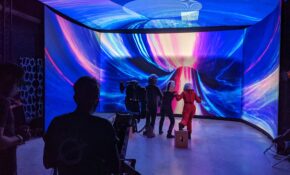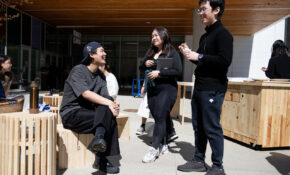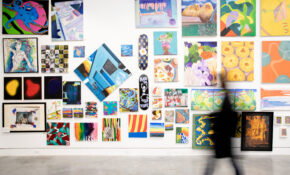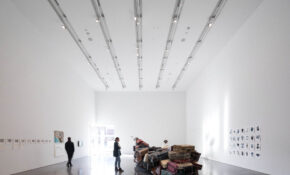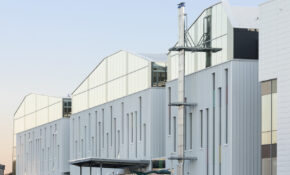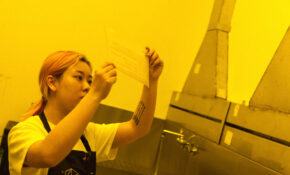Exhibition + Critique Spaces
Displaying and discussing your work is a key part of your ECU experience.
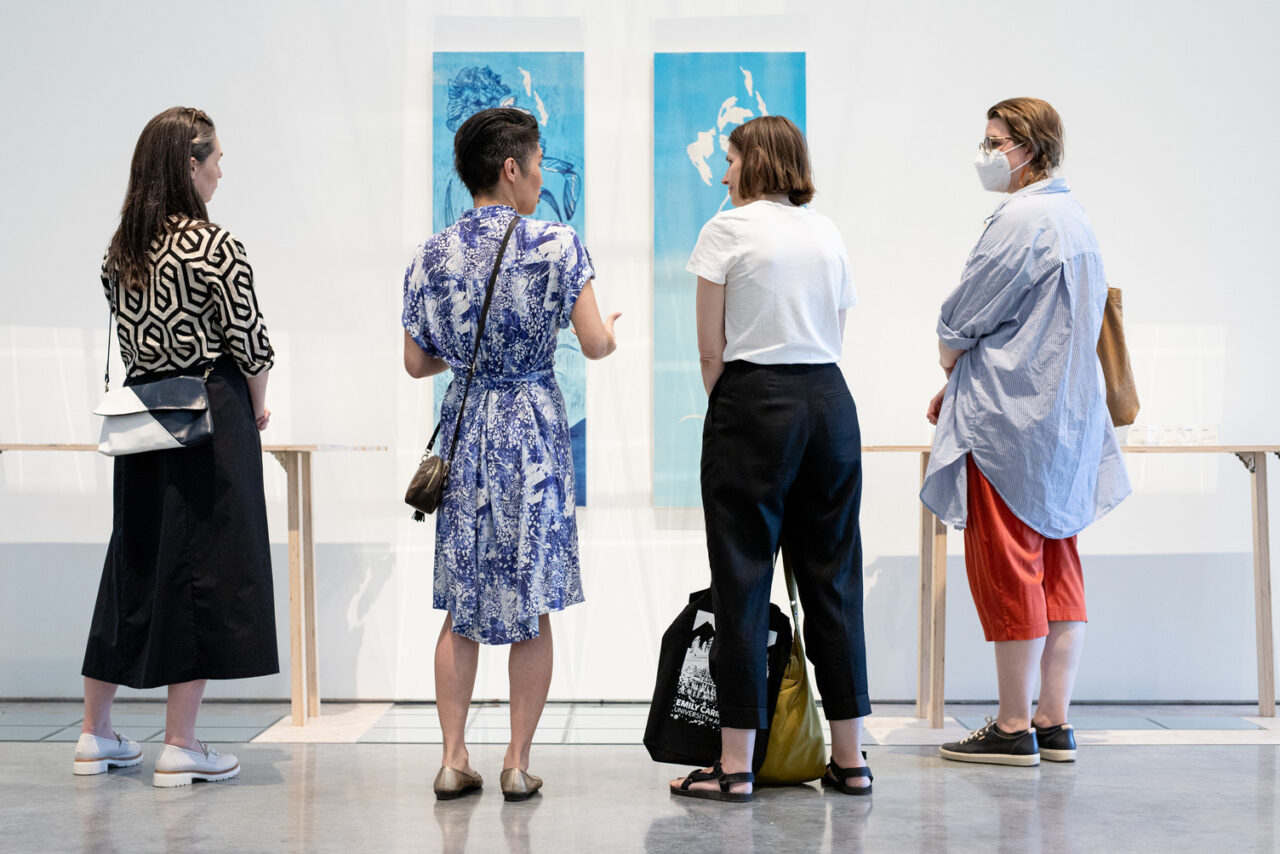
(L-R) Equinox Gallery exhibitions manager Hannah Reinhart, Jenie Gao (MFA 2023), Access Gallery director/curator Katie Belcher and Vancouver Art Gallery assistant curator Mandy Ginson discuss The Negotiation Table: An Ethic is a Root, by Jenie Gao. (Photo by Perrin Grauer)
What kind of space do you need?
Exhibitions primarily showcase the work of students through expansive annual presentations such as the Foundation Show, the Grad Show, MFA thesis exhibitions, the Student Art Show and Sale and more.
Critique spaces are booked for class presentations and short-term installations related to student critiques.
Knowing your requirements will help you narrow down what spaces are suitable for your use. Here are some questions to keep in mind as you explore what's available.
Availability can vary depending on timing, demand, and the type of space you need. Read our FAQs for answers to common questions about what is possible in our spaces.
Our team can assist you in finding a space based on your unique needs. We will help guide you through the request and booking process, the installation and take down of your work, and are here to answer any questions you may have along the way.
What kinds of spaces are available?
Exhibition Spaces
- Provide an opportunity to showcase completed works and engage with the public.
- These presentations are generally booked for 10 – 14 days, and can be student-led, curriculum-related or institution-wide (such as the Student Art Show and Sale, Grad or Foundation Shows, etc.).
- Students are able to apply for exhibition opportunities (primarily for group exhibitions) through the Student Exhibitions program.
- Faculty and staff can request gallery space to highlight projects relevant to the ECU community. Please note: priority is given to ECU-related curricular or research projects that engage students. Staff and faculty can on occasion request the spaces for solo or individual practices, as the calendar allows.
Critique spaces
- Generally not open to the public.
- Support the installation of works created as part of courses and curriculum.
- Typically booked during class time to a maximum of 3 days in selected spaces and provide an important opportunity for peer-to-peer learning, presentation and discussion.
All spaces, regardless of use, are user-maintained and must be restored at the time of take down.
Want to book a space for another use?
Spaces are available for use by students, staff and faculty throughout the year for university related business and curriculum related events and activities including, but not limited to:
- University Meetings
- Student Clubs
- Student filming on campus
- Screenings
- Guest speakers
Visit Community Bookings for more information. You can find a map of all classrooms, meeting rooms and other facilities on our Campus Maps page.
